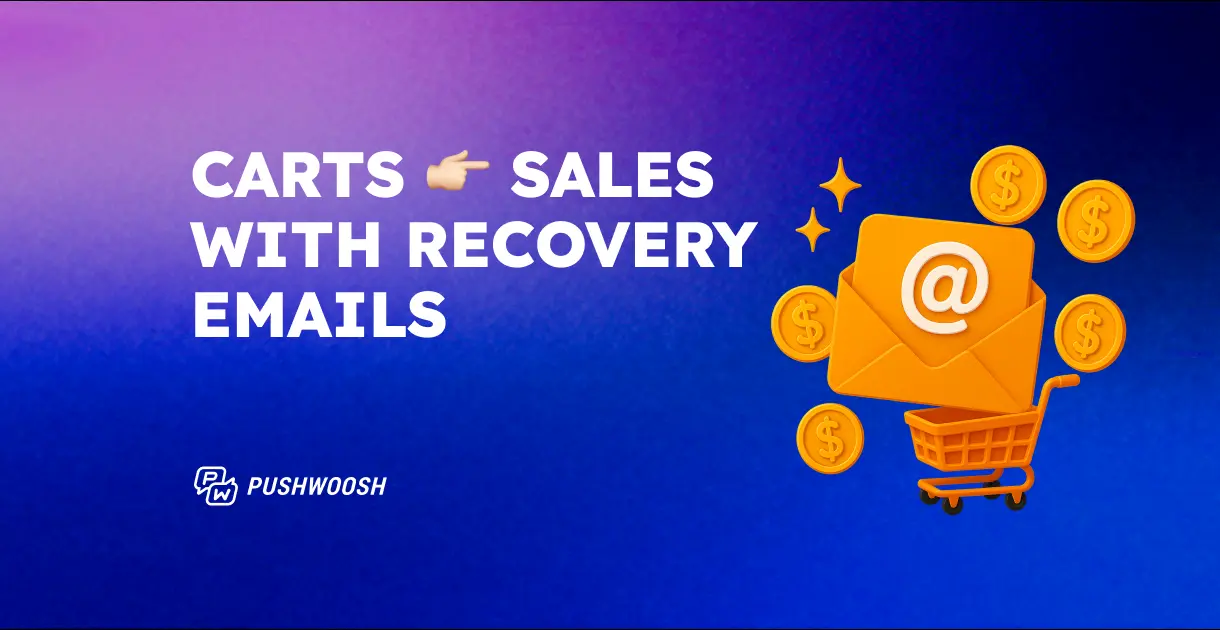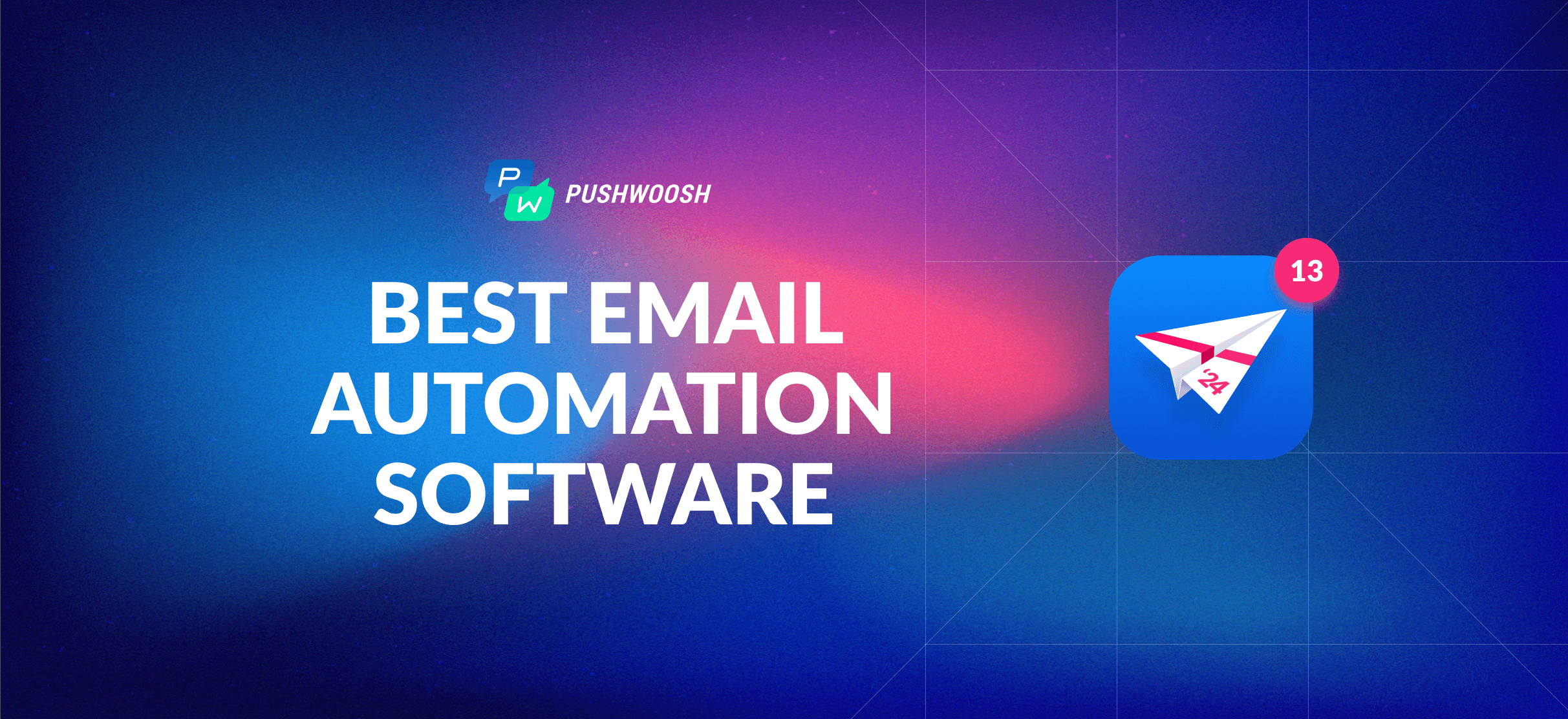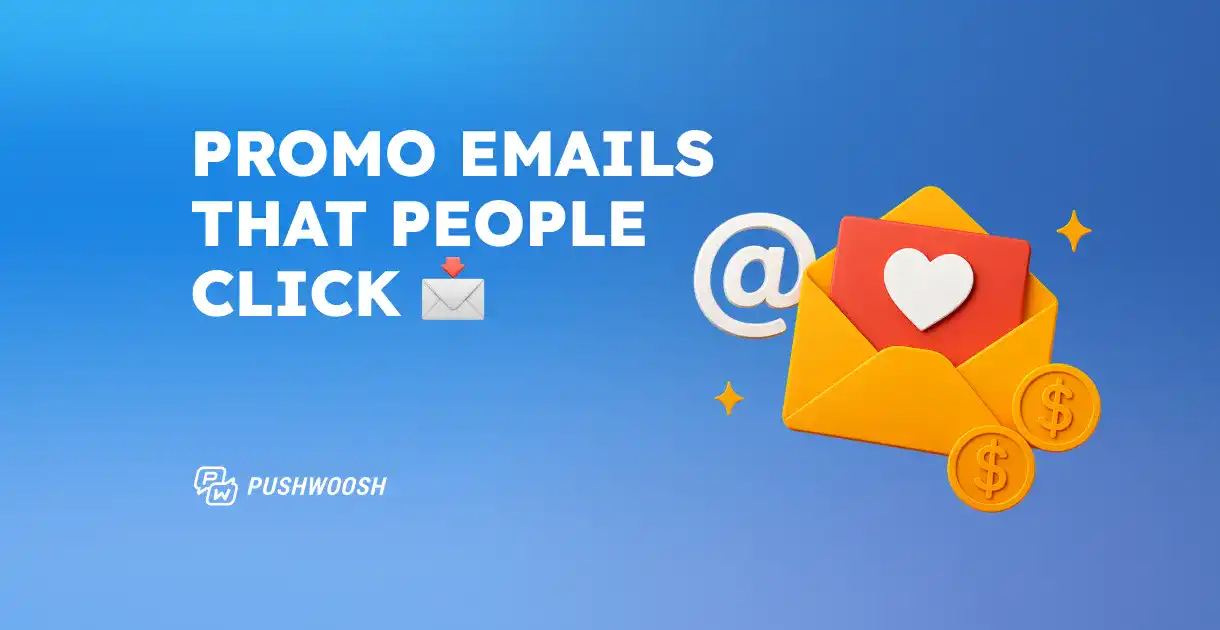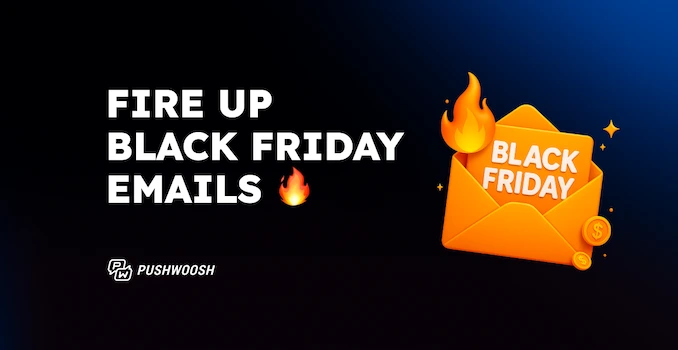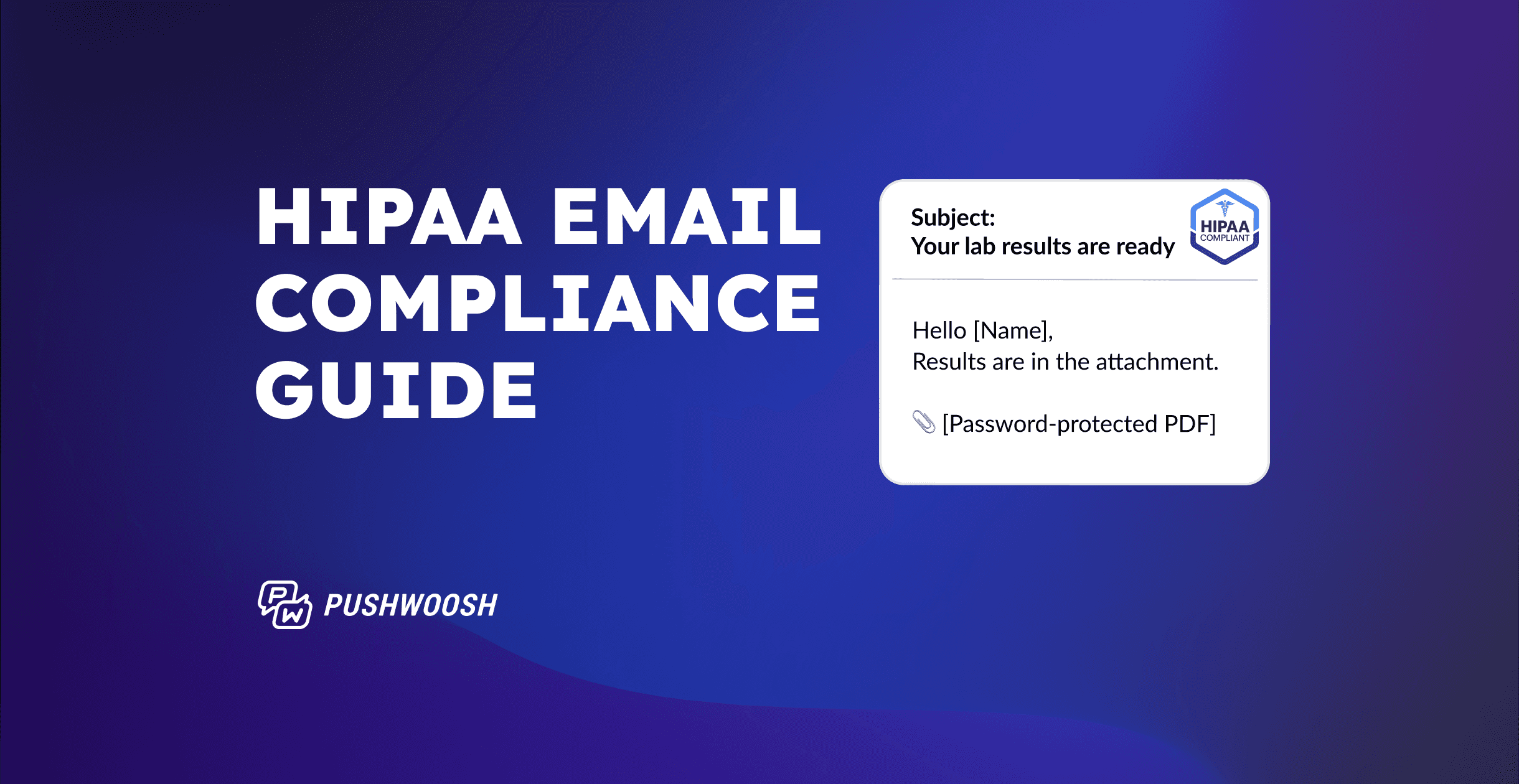Abandoned cart email: Examples & best practices for cart recovery
Over 70% of online shopping carts are abandoned before checkout — yet most of those lost sales can still be recovered. That’s where abandoned cart emails come in.
In this guide, you’ll discover an abandoned cart email strategy complete with real examples, best practices, and automation tips to help you turn abandoned carts into conversions.
P.S. Pushwoosh is an all-in-one platform that helps you recover lost revenue effortlessly — featuring a drag-and-drop email editor with a ready-made abandoned cart template and a Customer Journey Builder to automate your multichannel cart recovery flows.
What is an abandoned cart email?
An abandoned cart email — also known as a cart abandonment email or abandoned checkout email — is an automated message sent when a shopper adds items to their cart but leaves the website or app without completing the purchase.
The goal is simple: to recapture purchase intent, reduce cart abandonment, and recover lost revenue. These emails remind shoppers what they’ve left behind, address possible friction (like shipping costs or payment issues), and encourage them to return and finish checking out.
Are abandoned cart emails transactional?
Abandoned cart emails are not transactional — they are promotional triggered emails sent in response to a specific user action.
Triggered emails include both transactional and promotional messages — and abandoned cart emails fall into the latter category because their goal is to drive conversions rather than simply confirm an action.
While transactional emails (like order confirmations or password resets) are also triggered by user actions, their purpose is purely informational.
Abandoned cart email examples
Here are a few types of high-performing abandoned cart emails that consistently bring shoppers back:
Friendly reminder
A minimalistic message with a simple copy and the selected product image, no pressure.
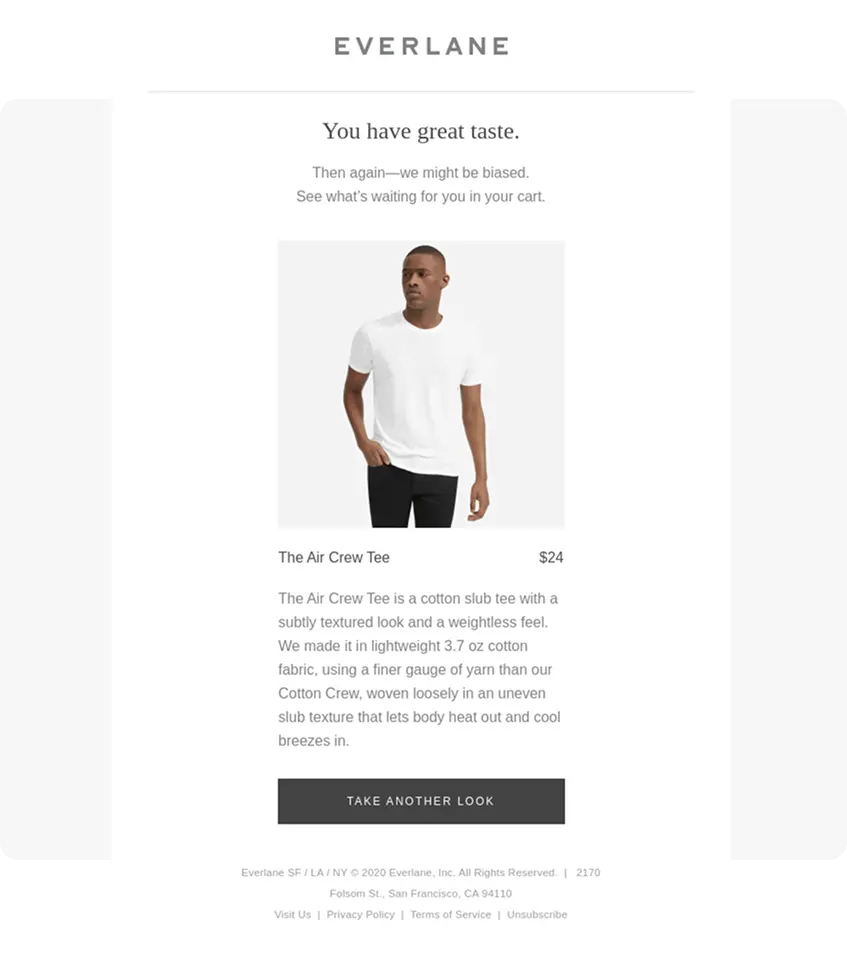
Why it works: It feels natural and non-intrusive; ideal for early follow-ups.
Incentive email
Adds a small motivator — free shipping, limited-time discount, or bonus points.
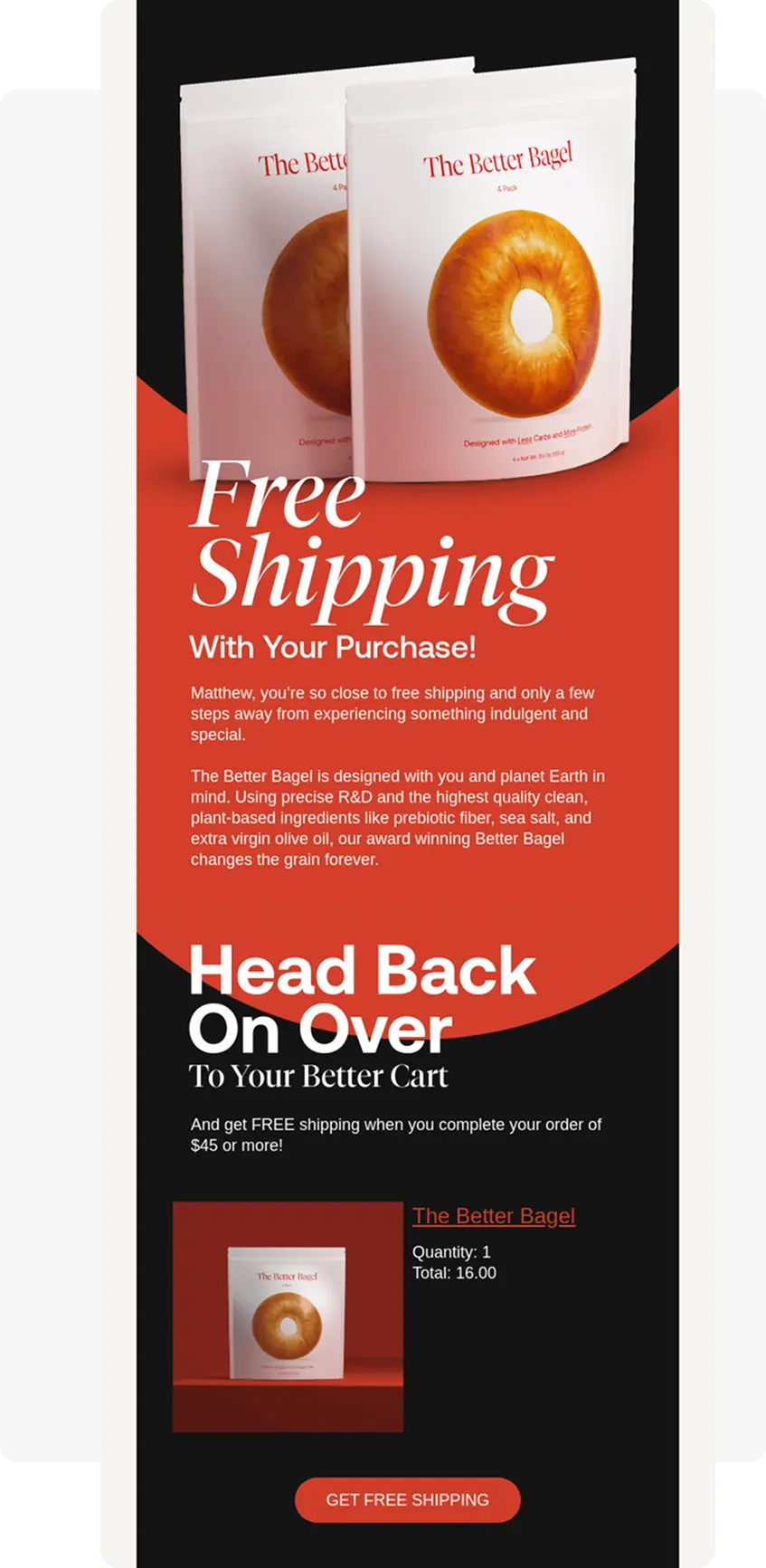
Why it works: A light incentive creates urgency and reduces hesitation.
Social proof email
Showcases reviews, ratings, or “bestseller” badges for the items left in the cart.
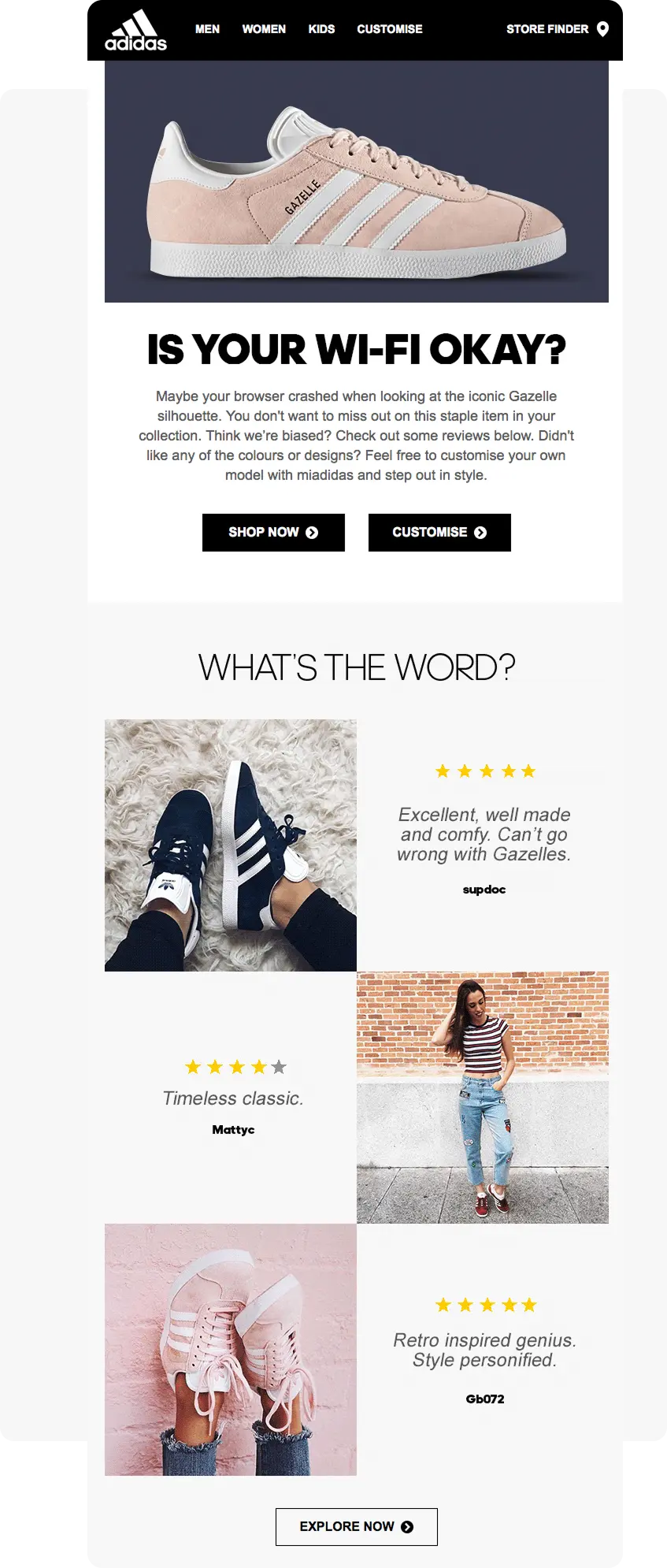
Why it works: Builds confidence and removes doubt by showing that others love the same product.
Urgency-driven reminder
Focuses on time or stock limits — perfect for high-demand products.
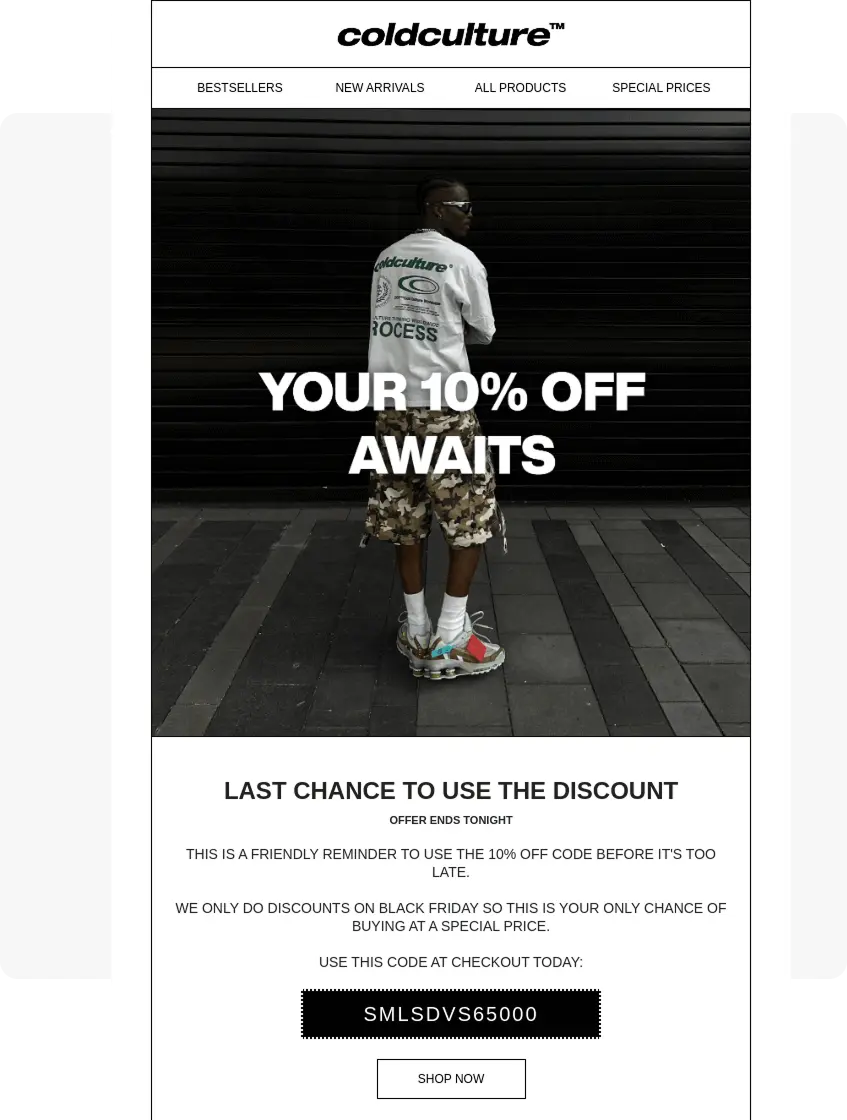
Why it works: Encourages fast action by tapping into FOMO (fear of missing out).
Personalized recommendation
Pairs the abandoned item with similar or complementary products.
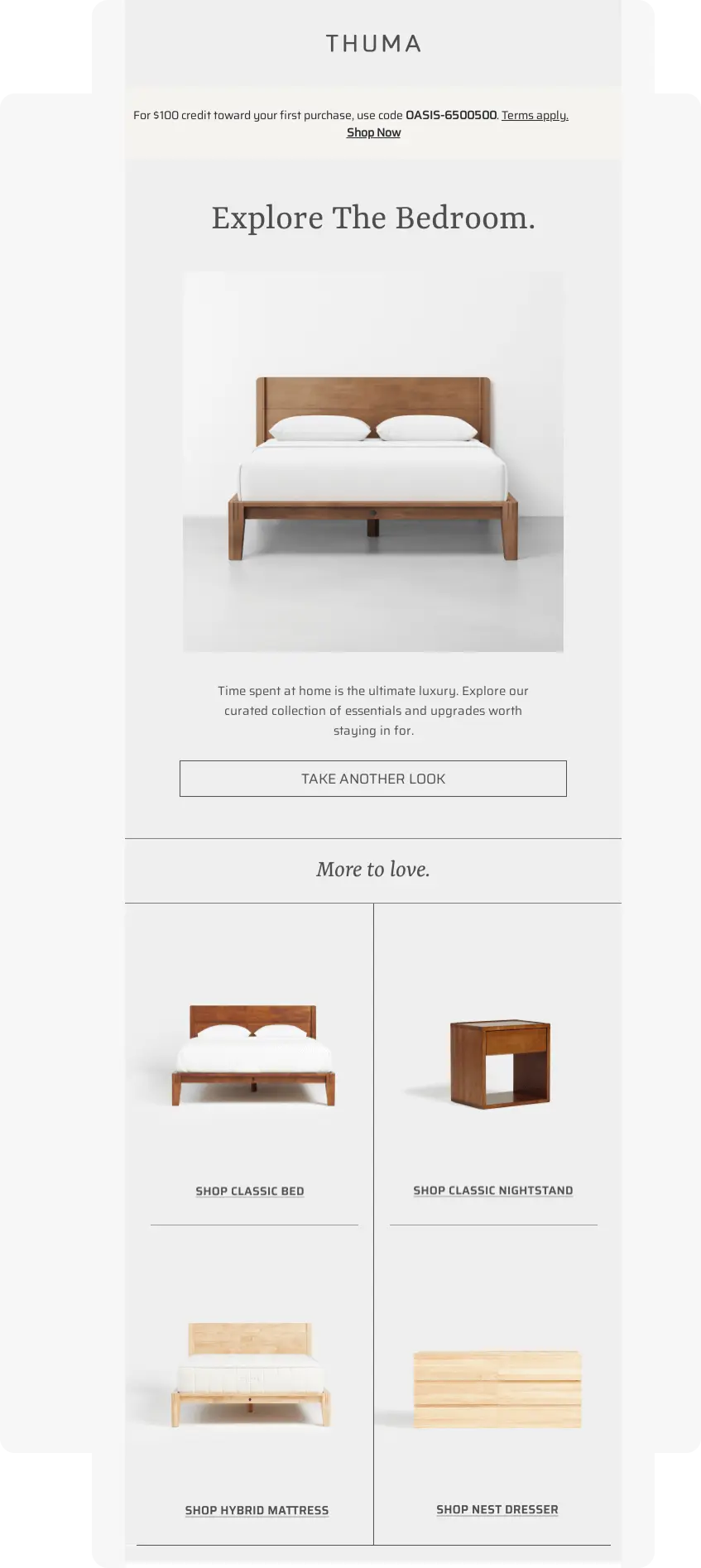
Why it works: Keeps interest alive and offers alternatives if the shopper hesitates.
Abandoned cart email template
The best abandoned cart emails follow a clear structure that reminds, reassures, and motivates the shopper to complete their purchase.
The goal is to make it effortless for shoppers to return and complete their purchase.
Anatomy of a good abandoned cart email
✅ Subject line: Short, personalized, and attention-grabbing.
✅ Header: Friendly greeting and branded visuals. Personalize your message with the customer’s name.
✅ Body: Mention the exact products left behind, highlight benefits, and remove hesitation.
✅ Product visuals: Include product images to re-spark interest.
✅ Incentive (optional): Offer a small motivator like free shipping or a limited-time discount.
✅ Call-to-action (CTA): Clear and single — “Complete your order.”
✅ Reassurance: Address common concerns — mention return policy, secure payment, or delivery time.
✅ Footer: Include company info, preferences, and unsubscribe link for compliance.
Ready-made abandoned cart email template
You don’t need to build everything from scratch. Pushwoosh offers an abandoned cart email template that you can easily customize in the built-in Drag-and-drop email editor.
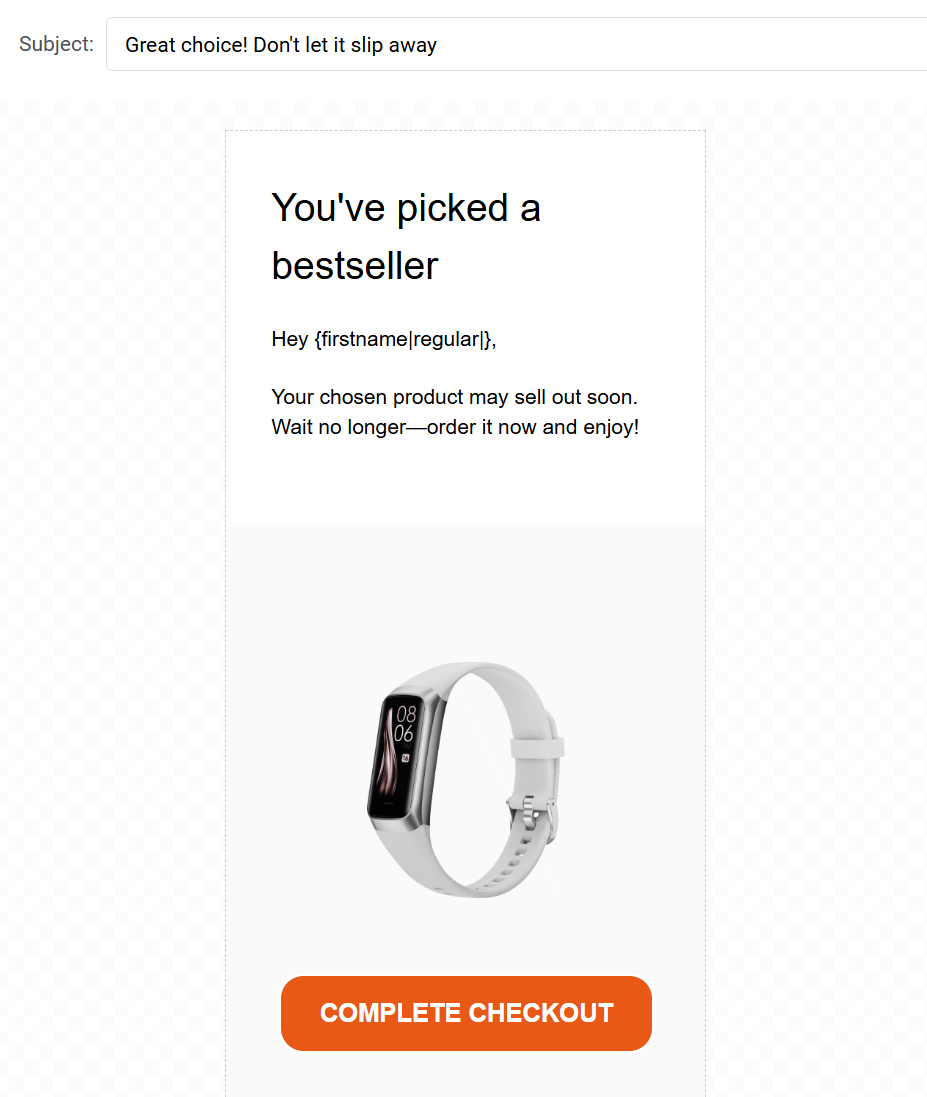
After creating your cart recovery emails, launch an automated abandoned cart email sequence in Pushwoosh Customer Journey Builder — all in one place.
Abandoned cart email best practices
Building an effective abandoned cart email strategy is about more than reminders. The most successful brands use smart timing, personalization, segmentation, and automation to turn hesitation into conversion.
Here’s how to get it right 👇
Set abandoned cart email timing
Timing determines whether your message feels helpful or intrusive.
If you are wondering how many abandoned cart emails to send, here’s a proven three-step cart abandonment email sequence:
- First email: Send within 1 hour — a simple reminder while intent is fresh.
- Second email: Send within 24 hours — add urgency or a small incentive.
- Third email: Send within 3 days — a final nudge, perhaps with a limited-time offer or alternative suggestion.
This cart recovery flow keeps your brand top-of-mind without overwhelming the customer.

Personalize every message
Generic reminders rarely convert. Personalized abandoned cart emails feel like a friendly reminder, not a sales pitch, which builds trust and drives higher recovery rates.
Use Dynamic content in Pushwoosh to automatically include:
- Customer name (“Hey, Alex — your order’s waiting”).
- Exact product details — name, color, size, image.
- Complementary product recommendations.
- Saved discounts, loyalty points, or free shipping eligibility.
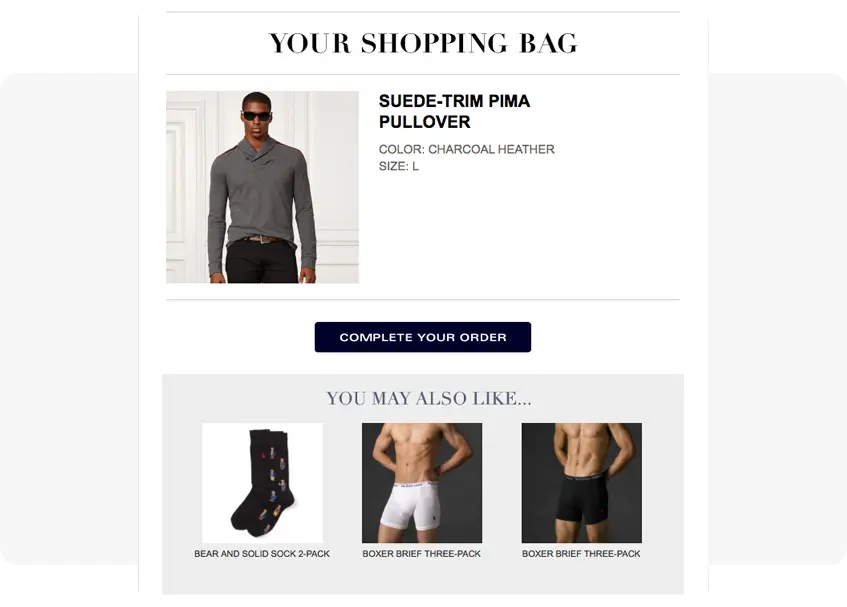
Take it a step further with Connected content, which pulls live information from your backend — like stock levels or updated prices — making every abandoned checkout email feel timely and relevant.
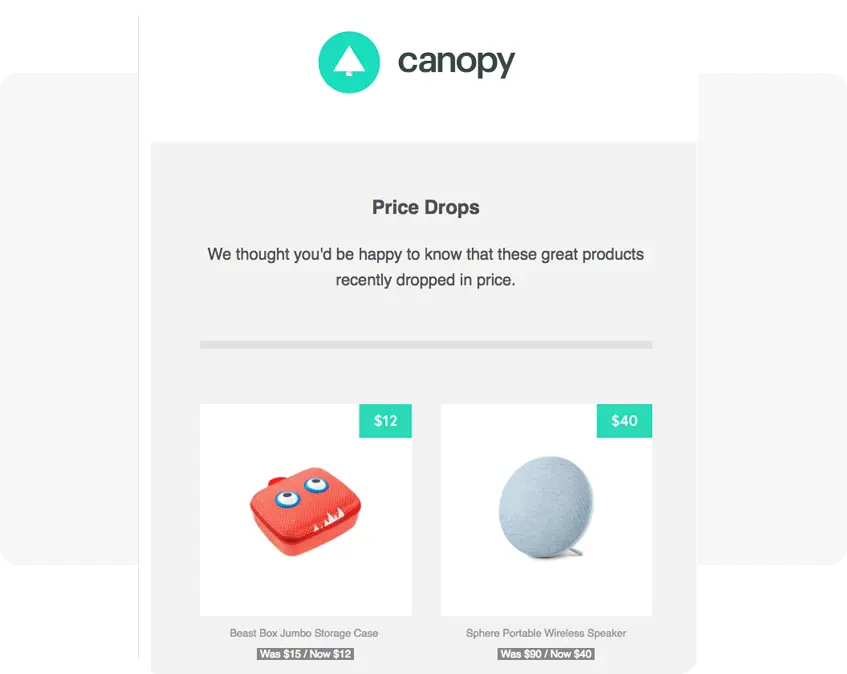
Segment cart abandoners by intent
Not all abandoned carts signal the same intent. Some customers genuinely plan to buy but drop off during checkout, while others use their cart as a wish list or comparison board. Treating these segments differently can make your abandoned cart emails far more relevant — and more effective.
Here’s how to segment your audience based on behavior:
High-intent abandoners
These are your most valuable users: people who added an item to the cart, viewed the checkout page, or have purchased before. They’re likely to convert if nudged at the right moment.
Segment: Product added to cart + No purchase made + Checkout page viewed/Have purchase history
Goal: Recover sales quickly during the critical window.
Message style: Stronger urgency — use deadlines or exclusive incentives.
Examples: “Hurry — your cart expires soon!”, “Complete your order today and enjoy free shipping.”
Wishlist users
These users have shown interest but haven’t reached checkout. They might be exploring.
Segment: Multiple items in cart + No purchase made + Checkout page not viewed/Have no purchase history
Goal: Keep interest alive and nurture it toward a future purchase.
Message style: Softer and more engaging — price-drop alerts, low-stock updates, or “move to favorites” prompts.
Examples: “Your favorites are still waiting”, “Good news — your product_name just dropped in price!”
Continuously test & optimize
No single formula guarantees the best abandoned cart emails — consistent testing does.
Run A/B/n tests to uncover what truly resonates with your audience:
- Abandoned cart email subject lines (“Your cart is waiting” vs. “You left something behind!”)
- Visuals (single product vs. multi-item layout)
- Incentives (free shipping vs. 10% off)
- Timing (30-min vs. 1-hour delays)
Then, track email performance — monitor open rates, CTRs, cart abandonment statistics, and recovered revenue — to identify winning combinations. Treat optimization as an ongoing process, not a one-time setup.
Combine emails with push notifications, in-app messages, and SMS
Your customers don’t live in one channel — and neither should your cart abandonment recovery strategy. Email is powerful, but combining it with abandoned cart push notifications, in-app messages, or SMS dramatically increases your chances of reaching shoppers at the right moment.
To maximize conversions and ensure every user receives a reminder, enable cross-channel fallback: if an email isn’t opened within a set time, the flow automatically continues with a follow-up on another channel.
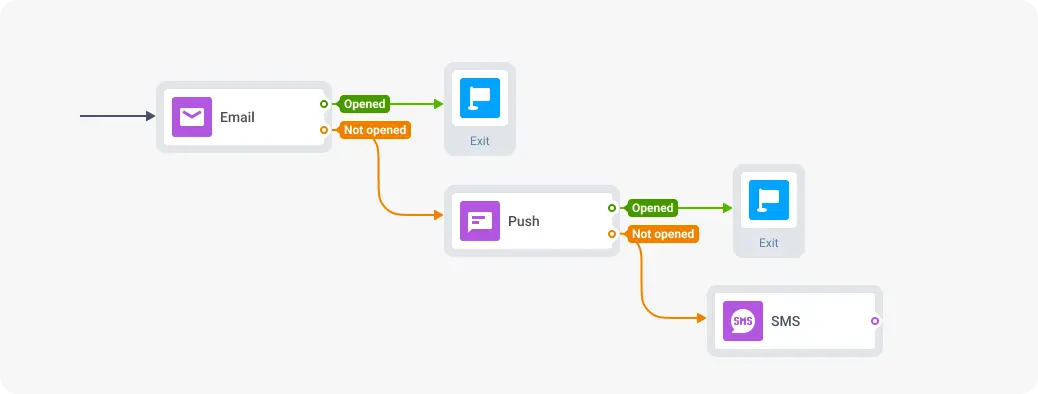
This way, each shopper gets reminded on the channel they’re most likely to engage with — without duplicate or overlapping messages..
Automate your cart recovery flow
Manually sending abandoned cart reminders is nearly impossible, especially when thousands of carts are being abandoned daily. That’s where automation turns every abandoned cart into a conversion.
With Pushwoosh, you can build an entire abandoned cart email sequence that runs automatically — reminding, nudging, and converting users 24/7 without manual work.
Here’s how to set it up in minutes:
1️⃣ Create your message:
Use the built-in drag-and-drop editor to customize the abandoned cart template with brand visuals, product images, and dynamic data (like product name, size, or discount).
2️⃣ Set the trigger:
Configure the “Cart abandoned” event — a shopper adds an item to their cart but doesn’t complete the purchase within a set period. Pushwoosh tracks this event automatically when you integrate the SDK or third-party tools you use for analytics (Adjust, Appsflyer, or others).
3️⃣ Add timing and logic:
Define your send delays (e.g., 1 hour → 24 hours → 3 days) and connect each step in the marketer-friendly interface — Customer Journey Builder.
4️⃣ Add additional channels:
Extend your email flow with push notifications, in-app reminders, SMS, or WhatsApp to ensure users get reminders only on their most responsive channel.
5️⃣ Launch and analyze:
Activate your flow and track performance in real time via analytics dashboards.
Once launched, your cart recovery process runs on autopilot, reducing cart abandonment rates and boosting sales with every cycle.

Recover up to 25% more abandoned carts with Pushwoosh
Pushwoosh is an end-to-end solution for abandoned cart email automation that provides you with everything you need for high-performing abandoned cart emails — ready-made templates, personalization, audience segmentation, and built-in analytics.
Plan, launch, and optimize your multichannel cart recovery strategy — all in one platform.

